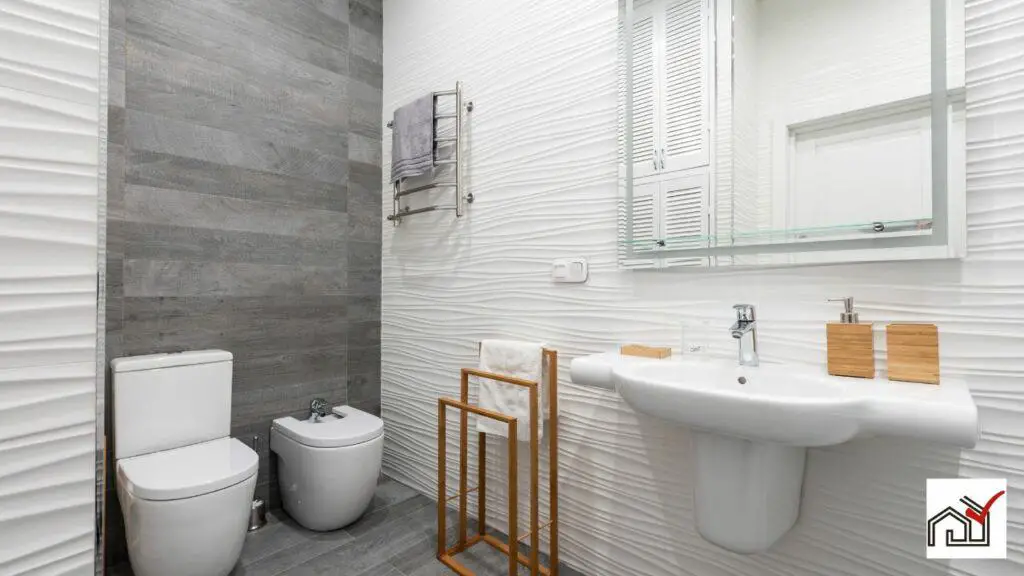An offset flange is used to reposition a toilet when it can't be directly aligned with the waste pipe. It's useful for remodeling or when installing new toilets that need a different layout.
However, installing an offset flange requires checking the plumbing system, following building codes, and considering how it might affect drainage. Before installing, it's important to balance the need for repositioning the toilet with the risk of potential issues, such as leaks or poor flow.
Understanding Offset Flanges
Offset flanges are necessary for aligning toilets with existing waste pipes. Choosing the right size and offset is crucial for a leak-free, reliable installation. An offset toilet flange is a fitting that allows for lateral adjustments to the toilet's position in relation to the waste pipe, which is useful during bathroom renovations or in tight spaces.
There are various sizes and offsets of flanges to suit different needs. It is important to select an offset that fits the plumbing setup to prevent misalignment. Misalignment can cause leaks and flow problems, and too much offset can reduce flushing efficiency due to altered waste pipe angles, affecting toilet performance.
For offset flange installation, it is recommended to consult a licensed plumber. They can evaluate the bathroom layout and suggest the right flange, ensuring the work meets building codes and standards.
The flange must also be installed at the correct height above the finished floor to avoid leaks. Proper installation is essential for the effective use of an offset toilet flange.
Benefits of Installing Offset Flanges
Installing an offset flange improves waste removal by aligning the toilet with the waste pipe, especially when direct alignment is obstructed by structural elements. It prevents the need for extensive plumbing work. The flange enables smooth waste flow, reducing blockage risk and ensuring the toilet works properly.
An offset flange also allows for more toilet placement options, useful in small bathrooms or renovations, optimizing space and improving design.
Additionally, it creates a secure, leak-proof connection between the toilet and waste pipe, lowering the chance of water damage and related issues, such as mold and mildew.
Potential Complications and Risks
Installing an offset flange can be beneficial but carries potential risks if done incorrectly. Precision and knowledge of proper alignment are crucial when adding an offset flange to your plumbing system to avoid misalignment, which can result in leaks and a weakened connection between the toilet and the waste line.
A key risk involves ensuring a secure seal between the toilet and the offset flange to prevent the release of unpleasant odors or harmful sewer gases. Inadequate seals can pose health risks and create an unwelcoming environment. Furthermore, if the offset flange does not facilitate a smooth flow of waste into the sewage system, blockages may occur frequently.
Structural integrity is also a concern. Some offset flanges may need additional support to remain stable. Without proper reinforcement, the flange and toilet could shift, causing damage or a broken seal. Following the manufacturer's instructions is essential to avoid these issues.
If there is uncertainty about installation, hiring a professional plumber is advisable for the best outcome.
Installation Considerations
Before installing an offset flange, measure the distance from the wall to the toilet drain's center to determine the required offset. Choose a flange that meets the size and offset needs of your toilet and plumbing setup to prevent leaks or flow issues.
Ensure the subfloor is level and sturdy where the flange will be installed. An unstable subfloor can cause the toilet to wobble and compromise the flange's seal, leading to water damage or sewer gas leaks.
Use proper sealing materials, such as wax rings or rubber gaskets, to create a watertight seal between the toilet and the flange. Correct application is essential to avoid leaks.
Consider hiring a certified plumber for the installation, particularly for complex projects or to adhere to local building codes. Professional installation can prevent mistakes and ensure the job is done correctly.
Alternatives to Offset Flanges
When an offset flange isn't suitable for a toilet installation, alternatives must be considered. One option is to adjust the plumbing beneath the floor to align with the toilet's rough-in dimension, ensuring a proper connection to the water flange.
Alternatively, toilets with an adjustable rough-in can be used for easier alignment with the existing water flange, avoiding extensive plumbing changes. This is beneficial when pipe relocation is impractical or expensive.
In some cases, moving the toilet to a different location in the bathroom where the rough-in matches the water flange may be the best choice, despite the potential for significant renovation.
Given these options, it is advisable to consult a professional plumber to identify the most suitable solution for the bathroom layout and plumbing system. Professional assessment ensures correct toilet installation and prevents issues related to improper offset flange use.
Making Your Decision
Evaluating alternatives to offset flanges is essential for an informed decision on their use in toilet installations. An offset flange might be needed to move the toilet away from the existing waste pipe due to bathroom layout constraints. Before installation, consider the following:
First, determine if an offset flange is necessary. If the toilet can be installed in its current location, a standard flange is adequate. If not, an offset flange may be required.
Second, review local building codes. Some areas may restrict offset flanges or require permits. Compliance avoids legal issues and extra costs.
Consider the impact on bathroom aesthetics. Incorrect installation of an offset flange can affect the appearance.
Weigh the convenience of moving the toilet against potential flow issues. Offset flanges can change waste flow, possibly leading to blockages.
If unsure, seek advice from a professional plumber to ensure correct and efficient installation if an offset flange is selected.





